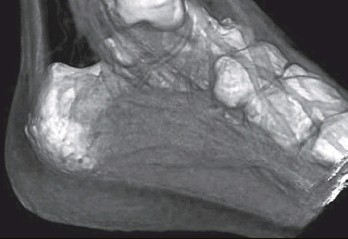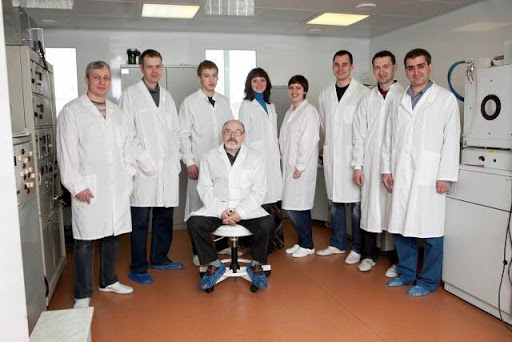Very often, technologies that are turning the world upside down are born in the silence of laboratories. The world does not immediately learn about them, since their path - from theory and experiments to application in everyday life - is sometimes difficult and long. We will talk about one of these technologies today with Professor Oleg Tolbanov, Doctor of Physics and Mathematics, Director of the TSU Center for Research and Development "Advanced Technologies in Microelectronics".
Professor Tolbanov and his colleagues are engaged in the physics of semiconductors and semiconductor materials of complex composition, trying to modify their properties by doping (introducing certain impurities into one material) to use them in creating devices of a new type. One such device is a sensor based on highly resistive gallium arsenide, chromium compensated, potentially capable of revolutionizing radiography.
- What is the fundamental novelty in the technology of X-ray examination using your sensors?
- Now the market for X-ray equipment is absolutely oligopolistic: there are a large number of consumers and only a few powerful players on the market. For example, “General Electrics”, “Toshiba”,  “Philips”, “Siemens” produce more than 90% of X-ray equipment. We are talking about equipment created on the basis of technologies developed 20-30 years ago. Over the last 20 to 30 years, scintillators have replaced X-ray films, but the principle of their operation remains the same: the scintillator reads quanta, converting them into light radiation, which is then converted by photodetectors into an electric current pulse. In order to obtain an X-ray image, all information read by the sensors must be converted into pulses of electric current. Attempts to increase the efficiency of this process have been undertaken by various manufacturers many times, but today its threshold in the world is 22%. In other words, the image remains black and white, although it is sharper than it used to be.
“Philips”, “Siemens” produce more than 90% of X-ray equipment. We are talking about equipment created on the basis of technologies developed 20-30 years ago. Over the last 20 to 30 years, scintillators have replaced X-ray films, but the principle of their operation remains the same: the scintillator reads quanta, converting them into light radiation, which is then converted by photodetectors into an electric current pulse. In order to obtain an X-ray image, all information read by the sensors must be converted into pulses of electric current. Attempts to increase the efficiency of this process have been undertaken by various manufacturers many times, but today its threshold in the world is 22%. In other words, the image remains black and white, although it is sharper than it used to be.
 Our sensors for X-ray machines are fundamentally different in that they read each quantum and instantly convert it into a charge that creates a current pulse. There is no need for double conversion - from a quantum into light radiation and then into a current pulse. In addition, this technology makes it possible to estimate the energy of each quantum, which is displayed in a certain color. An X-ray machine with detectors based on such sensors works as a modern camera, transmitting an image in color. At the same time, all types of tissues can be viewed in one image: bones, organs, and blood vessels, since they absorb X-rays of different energy levels.
Our sensors for X-ray machines are fundamentally different in that they read each quantum and instantly convert it into a charge that creates a current pulse. There is no need for double conversion - from a quantum into light radiation and then into a current pulse. In addition, this technology makes it possible to estimate the energy of each quantum, which is displayed in a certain color. An X-ray machine with detectors based on such sensors works as a modern camera, transmitting an image in color. At the same time, all types of tissues can be viewed in one image: bones, organs, and blood vessels, since they absorb X-rays of different energy levels.
But that's not all! Our medical colleagues suggest that X-rays on our machines may provide PET scanning that requires contrast media. By distributing the transmitted energy into 6 to 8 ranges, it can show the phase composition of tissues and what they are saturated with - carbon, oxygen, etc.
All of these advantages come from high resistivity gallium arsenide compensated with chromium, which is the material we have created at our laboratory.
- How did you get this material?
- We took one chromium atom and inserted it into the gallium arsenide matrix, in a strictly defined place, in a ratio of one to ten million matrix atoms. It would seem that one atom is nothing, but the ability of the altered gallium arsenide to conduct an electric current has been reduced by 10 billion times! There was a conductor, but it has become almost an insulator, which has a very high resistance and is able to detect any external influences. On the basis of this material, a sensor for an X-ray installation is being created, capable of capturing quantum radiation with the utmost precision and converting it into a color image.
- There is a concept of multiple discoveries, based on the assumption that most scientific research and inventions take place more or less simultaneously in different research teams, sometimes in different parts of the world. The opposite heroic theory of inventions and discoveries leaves the leading role to individuals. In your case, are you “heroes” or are there scientists who have also come to similar results?
- All modern electronics are based on doped semiconductors. But now doping is used with fine impurities, which are ionized at room temperature. The more impurities are added to the material, the more electrons are received at the output. They determine the level of the flowing current, that is, the conductivity of the material. Accordingly, one such element performs a specific narrow task. And then a whole block of some technical device, for example, a computer, is built from several elements.
About 30 years ago, in the last years of the Soviet Union, we started alloying materials with deep impurities. Such impurities are not ionized. Now imagine a single atom placed in a crystal (semiconductor), in which everything is ordered and each cell perceives this atom as a foreign body. Such a forced "neighborhood" changes the structure of the semiconductor so that the material acquires the so-called functional properties. One crystal with such properties can replace several elements and perform the function of an entire circuit on its own!

The results of our work are presented by the physical model and the operation of the sensors. However, it is extremely difficult to experimentally prove this physical model and until now this physical model has not received universal acceptance. The reason for this is thinking based on the traditions of thirty years ago. Let me make a bold statement: no fundamentally new discoveries in physics have been made over the past 30-40 years. Emerging technological solutions are based on "old" discoveries, for example, the transition to nanolayers. However, new silicon electronics are still assembled from circuit elements - only on an incredibly small scale.
Returning to the issue of similar research in the world: our colleagues have no similar results on the creation of functional elements - crystals with the properties of a whole circuit.
Editorial Board
